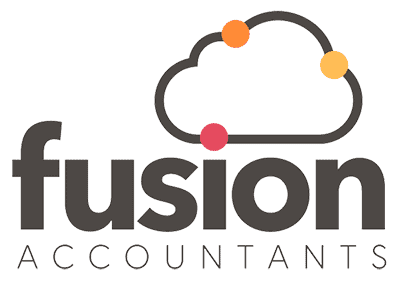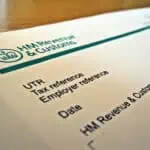Guide to National Insurance Contributions for Self-employed
Reading Time:
What is national insurance?
National Insurance contributions (NICs) are the payments made by you and your employees to the UK’s social security system. It is a kind of tax that is paid on income be it employment income or self-employed profits. To be able to make national insurance contributions, you will need to have a national insurance number (NINO). NINO is your unique identification number in the UK tax system and helps HMRC keep track of your NI contributions. NINO consists of two letters, six numbers, and a letter at the end.
Example of NINO AB 12 34 56 C.
NINO will be sent to you upon reaching 16 years of age provided your parents or guardians claimed child benefits, if not, then you will need to apply for it by following the link on the Government website.
For self-employed business owners, comprehension of both personal and business NICs is essential. The categories of these contributions may fall under Class 1, Class 2, or Class 4. There is another category called class 3 national insurance contributions as well but that is voluntary.
This guide by Fusion Accountants, business tax accountants, elucidates the classifications of NICs, their impact on you and your business, and how to effectively manage them.
Why paying national insurance contributions is important?
The amount of NI you pay will determine your eligibility for certain state benefits like state pension, maternity allowance, and job seeker allowance.
Let’s begin our exploration!
What are the different classes and rates of national insurance?
National Insurance contributions hold significance for self-employed business owners in the UK as they finance several state benefits. We begin with Class 1 NICs.
Class 1 National Insurance Contributions
Class 1 NICs are levied on employers and employees based on earnings. They apply to individuals aged 16 or older until the state pension age.
Employers start contributing if an employee’s earnings reach the secondary threshold i.e. £9,100 per year while employees contribute if their earnings reach the primary threshold i.e. £12,570 per year.
The contribution rate depends on earnings: employers contribute at a rate of 13.8% on all earnings above the secondary threshold of £9,100 per year; with effect from 06 January 2024, employees contribute at a rate of 10% on yearly earnings between £12,570 and £50,270 plus an additional rate of 2% on yearly earnings above the upper earning limit of £50,270. These contributions are deducted directly from the employee’s salary.
Employer and Employee National Insurance thresholds and rates
Class 1 National Insurance Thresholds 2023-2024 and rates
| Threshold | Annual earnings | Comments |
|---|---|---|
| Lower earnings limit | £6,396 | No contribution due |
| Primary threshold | £12,570 | Employee’s contribution @ 10% becomes due |
| Secondary threshold | £9,100 | Employer contribution becomes due @13.8% |
| Upper earning limit | £50,270 | Additional employee contribution @2% becomes due |
Class 1 NICs finance various UK state benefits, such as:
- Basic State Pension
- Additional State Pension
- Maternity Allowance, Bereavement Benefits, and Jobseeker’s Allowance
There is good news for small employers to take advantage of the employment allowance of £5,000 for 2023-24 and reduce their employer NI bill.
Class 2 and Class 4 National Insurance Contributions
Understanding Class 2 and Class 4 NICs is crucial for self-employed individuals as these differ from Class 1 contributions.
Class 2 NICs apply to self-employed individuals with profits above a small profit threshold of £6,725 per year. These are fixed weekly payments of £3.45 made either monthly or bi-annually.
Please note that from 06 April 2024, class 2 NIC will be withdrawn by the Government and abolished. (Autum September 2023)
While both classes grant access to UK state benefits, their coverage differs:
- Class 2 Contributions provide entitlement to the State Pension, and Maternity Allowance, among other benefits.
- Class 4 Contributions typically do not count towards state benefits but are mandatory if earnings reach a certain threshold.
Class 4 National Insurance Thresholds & Rates
| Threshold & rates | Profits |
|---|---|
| Lower Profits Limit | £12,570 |
| Upper Profits Limit | £50,270 |
| Rate between Lower & Upper Profits Limits | 9% |
| Rate above Upper profits limit | 2% |
From 06 April 2024, the rate of class 4 NIC will be reduced from 9% to 8%.
Class 3 Voluntary National Insurance Contributions
There exist non-obligatory National Insurance Contributions known as Voluntary National Insurance Contributions. Opting to make these payments can help fill any gaps in your National Insurance record, ensuring you qualify for certain benefits.
Class 3 voluntary contributions can be made if there are gaps in your record.
You can only pay to cover a gap of up to the past 6 years.
Meeting the Requirements for UK State Benefits
NICs link self-employed business owners to several UK state benefits including the State Pension, Jobseeker’s Allowance, Employment and Support Allowance, and Bereavement Benefits. Eligibility is determined not only by your NICs but also by your taxable income and investment income.
Maintaining an accurate National Insurance record is critical as any discrepancies could affect your qualification for full state benefits. Regular reviews ensure you’re aware of any issues that could impact your eligibility.
Also Read: FreeAgent Integration with GoCardless. How it actually works
You need a minimum of 10 qualifying years to be eligible for a UK state pension i.e. to have paid or credited with NIC for at least 10 years. Further, the lower earnings limit (£6,396 for 2023-24) determines the minimum level of NIC you need to make in a tax year to be credited with a qualifying year towards your state pension.
Managing and Paying National Insurance Contributions
As a self-employed business owner, managing and paying your NICs is crucial. Here are some key insights:
Payment Procedures for Class 1 NICs
Employers can opt for Direct Debit, bank transfer, or cheque. Employee contributions are deducted directly from their wages.
Payment Procedures for Class 2 and Class 4 NICs
For self-employed individuals, options include Direct Debit, online or telephone banking, or debit or credit card payments through HMRC’s website.
Payment Methods for Class 3 NICs (Voluntary Contributions)
Payment options include Direct Debit, online banking, cheque, or postal order.
Choosing the appropriate payment method depends on factors such as cash flow management and convenience. Crucial deadlines to consider include monthly or quarterly payments for Class 1 NICs and January 31st (and July 31st for payments on account) for Class 2 and Class 4 NICs.
Regardless of whether you prefer online payments or traditional methods like cheques, it is imperative to maintain accurate records of all your payments. This practice aids in future financial planning and ensures compliance with HMRC requirements.
When you reach State Pension age, your National Insurance contributions will cease.
Conclusion
Understanding and managing National Insurance contributions is crucial for self-employed business owners in the UK. It not only affects their own entitlement to state benefits but also impacts their employees’ contributions. By staying informed about the different classes and rates, self-employed business owners can ensure compliance and avoid penalties. So, don’t overlook the importance of National Insurance contributions – they are an integral part of running a successful business in the UK.

If you need help complying with National Insurance contributions, trust Fusion Accountants will make your compliance smooth and easy.






